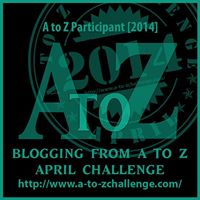Reimagining Beauty – D is for Determination
Reimagining Beauty – D is for Determination
I admit it, reimagining beauty as determination may seem a bit counterintuitive at first. It might conjure an image of someone’s nose on a grindstone (seriously, I mean, ouch!). The idea of a stony-faced, focused, sweaty person who might even be grunting as she or he labors toward a goal is not exactly attractive. And yet, what athlete who was in Sochi for the 2014 Winter Olympics didn’t have moments of just that?
Determination produces a person who conceives goals and then has the “stick-to-it-iveness” to achieve them.
“Our greatest glory is not in never falling, but rising every time we fall.”
Often attributed to Confucius, this phrase embodies and emboldens determination. Achieving such glory is a beautiful indeed. Yet wanting it is only part of the equation. The path to glory is rife with challenges; those who stumble or crumble and then rise out of the ashes to try again are determined people. Pounding through in spite of the obstacles – climbing, trying a new path, pushing, whatever it takes – determination is the fuel that helps us manifest our hopes and dreams.
Not only is it an admirable quality, but determination is beautiful when seen. There is a moment when a person turns his head, sets her mouth firmly, then trains the eyes in the direction of a goal. The moment of resolve, that instant of physical and mental commitment is an incandescent, bell-ringing moment of inner and outer beauty, in full sync.
Determination is the cornerstone of achievement. Hardworking artists striving to ‘make it’ and students attempting to get high grades to get into college are determined. They are determined in the service of long term goals.
But determination is a hallmark of those living with challenges, like people with disabilities, people with illness, and those facing hardship. People who live life to its fullest despite illness and disability are determined. Those who strive against the tide and in face of hardship, are beautiful indeed.
Writers and storytellers have the opportunity to share all the qualities that make people beautiful. Determination is surely one of them. Tell about such people, write about them, help the world know the beauty of their wonderful, beautiful efforts. If we are determined, we can reimagine beauty.
**********
Copyright 2014 The Storycrafters. All rights reserved.

